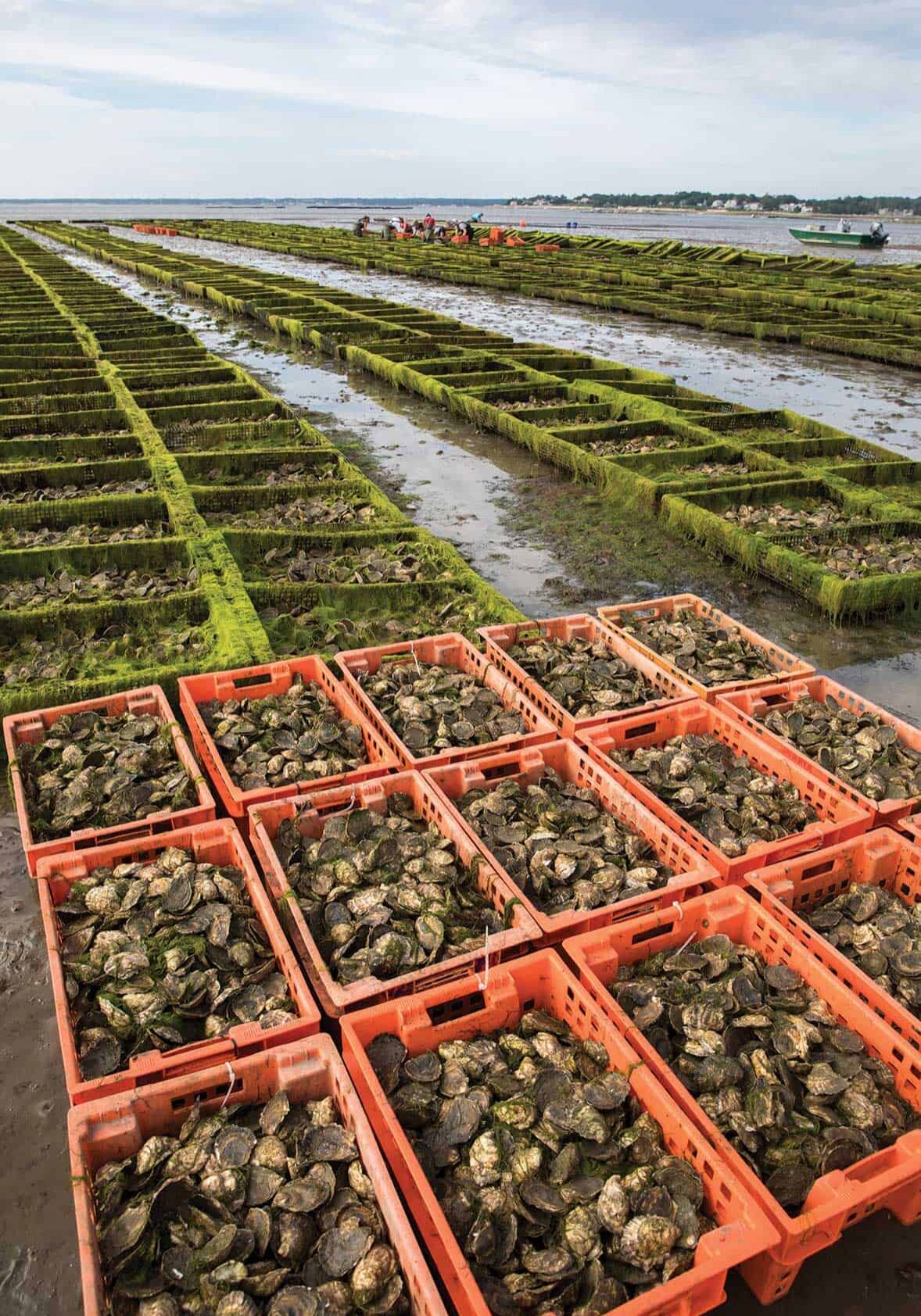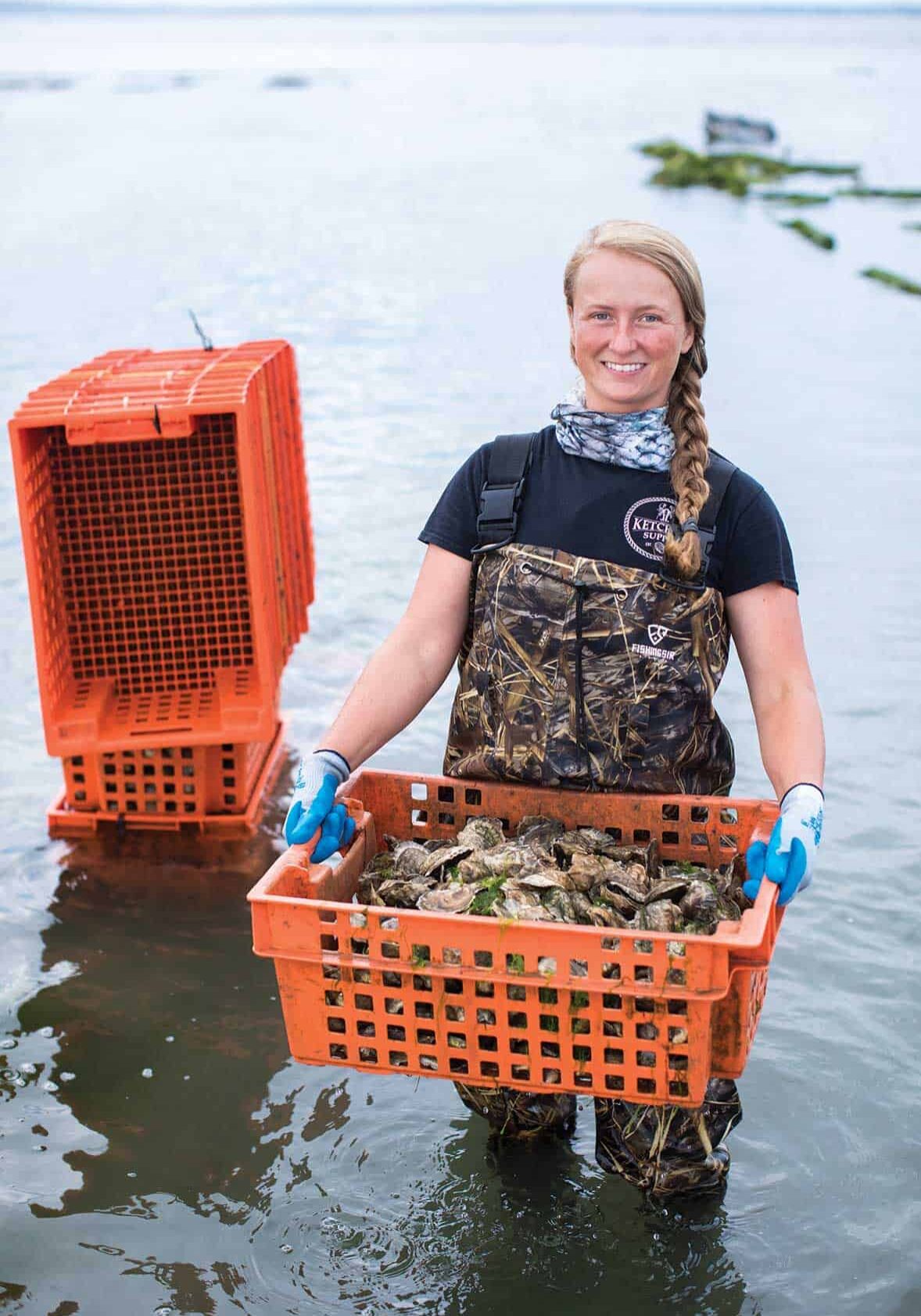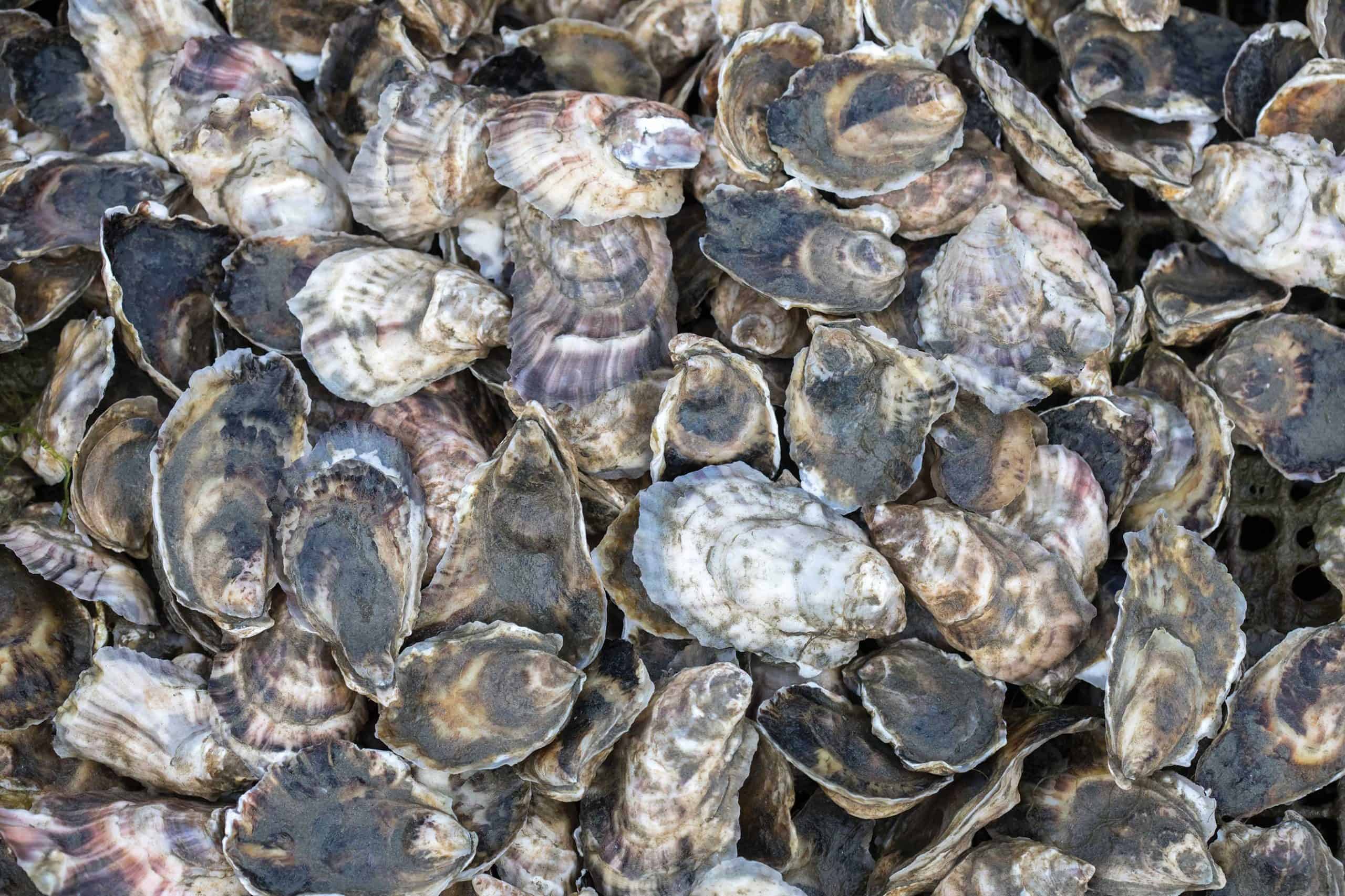Ursula Balmer’s work ethic and salty ways help her lead the farm crew at Island Creek Oysters in Duxbury.
Written by Lannan O’Brien
Photography by Julia Cumes
If there’s an early tide, Ursula Balmer might have to wake up at 3 a.m. to make her 40-minute commute to work—but you’ll never hear her complain. Her “office” is the open water, and upon arrival at the Island Creek Oysters farm she manages, she is greeted by the sunrise over Duxbury Bay.


“It’s the best start to the day,” says Balmer, who heads the small crew responsible for harvesting and culling the company’s Row 34 and Island Creek oysters, two of the three varieties the company sells (the third being Aunt Dotties). Once in her hands, the oysters have already been raised from seed by a separate crew on the bay. Balmer’s team’s sorts the oysters by size and quality and bags them for sale. Essentially, she says, “This means kneeling in the mud over a tray full of oysters.”
One of the first things they check is the size of the oysters. A “select” measures 2.5 - 3 inches long, while a “regular” is 3 - 3.5 inches. When it comes to quality, Balmer says, “You’re looking for a fat, round-shaped oyster with nice meat inside,” the latter of which is evident by the size of the cup (the rounded part of the oyster shell). It’s hard work, but that’s one of the main reasons she enjoys it.
The daughter of a commercial fisherman, Balmer grew up on Cape Cod and was naturally drawn to the sea. After graduating with a degree in marine biology in 2010, she worked odd jobs until an opening at Washburn Island Oysters, near her home in Falmouth, caught her attention. She found the work came naturally and she later took on a role raising shellfish for the town of Barnstable. About five years ago, Balmer’s path led her to Duxbury, where she originally applied for a job at the Island Creek Oysters hatchery. “I thought it would be interesting to learn a different side of the job,” she says. But when they offered her a position on the farm instead, she never looked back.
When she first started working in the shellfishing industry, as a young blonde in her early 20s, there were certainly people that underestimated her abilities. But Balmer made a point to prove herself and her efforts paid off. “I can’t physically lift as much as my male coworkers, but I obviously make up for it in the speed and quality of my work,” she says. She’s the only full-time, year-round female worker on the farm, but Balmer says she has seen a positive shift in recent years, with increasing numbers of women learning the trade.
The truth is that gender matters little when the team is out on the water, working to handle whatever nature throws their way. Balmer is constantly keeping an eye on local weather, and in particular, the wind. “I don’t like putting my crew in unsafe conditions,” she says, noting that thunderstorms in the spring and summer can prevent them from heading out to the farms. Stormy weather can require them to bring the boats to shore for the weekend and even move the floating house where they sort and bag the oysters to a safer location. Of course, there are moments when Mother Nature is unpredictable. “When we hear thunder, it’s sort of like a scramble to go in.”
For Balmer, the excitement of spotting oysters that her team raised on a restaurant menu never fades--nor does the joy of eating them. Epic Oyster was the first restaurant in her hometown of Falmouth to sell all three of Island Creek’s oysters, and Balmer went out with a friend one night to order a couple. While it was fun, she admits, “It’s silly to spend that money for oysters when you can get them for free.” Next to the sunrise, that’s one of the best perks of the job. Balmer often takes home the discards, such as the larger oysters they have trouble selling. Sometimes, she’ll fry them in beer batter or bake them with pesto, but (being a purist) she usually prefers to eat them the no-frills way--freshly shucked and straight out of the shell.
The question people always ask is: what makes the perfect oyster? Balmer looks for a clean taste with high salinity. That’s exactly what you’ll find in the Row 34s, which is her personal favorite of the Island Creek varieties. Then again, she’s a little biased. When Balmer first started on the farm, Island Creek Oysters didn’t grow many Row 34s, but under her management they have become a well-established part of the brand. “I’ve really worked hard to make them one of our best oysters,” she says, with genuine pride in her voice. “I’ve watched them grow, they’re my babies.”

From the Farm
to The Raw Bar
Sure, you can try Island Creek’s oysters at a local restaurant. But why not go right to the source? Picture this: enjoying oysters on the half shell with a cocktail in hand, seated on a beautiful patio overlooking Duxbury Bay where the oysters are produced. This is the experience that awaits at The Raw Bar at Island Creek Oyster Farm.
Open daily from noon until twilight (typically around 8:30 p.m.), the Raw Bar serves several local beers, wine—including natural and organic wines by the bottle, intentionally selected for shellfish pairing—canned cocktails, and house-made red sangria and frozen margaritas.
Hungry? The Island Creek food truck awaits with a selection of light snacks, as well as delicious seafood specialties to fill you up. Choose from dishes like lobster cocktail, grilled and chilled lobster served on the half shell; a shrimp cocktail recipe crafted by Bill Bennett, a local oyster farmer and lobsterman, and the father of Island Creek owner Skip Bennett; various “conservas,” or tinned fish, from Spain and Portugal; and sturgeon caviar served with chips, or even—get this—over hot dogs.
And, of course, the main event: oysters. If you’re torn over which oysters to try, here’s a helpful guide to the three varieties from Tim Mahoney, one of the Raw Bar managers:
Island Creeks:
“These were the first grown by Skip [Bennett, the owner of Island Creek]. They are the only oysters we grow on the bottom of Duxbury Bay, which imparts it’s signature earthy, vegetal flavors.”
Row 34:
“A close cousin of the Island Creek. These are grown in trays just off the bottom, so less earthy flavors, just clean and crisp with nice mineral notes.”
Aunt Dotty:
“Aunt Dotty’s are grown across the Bay just off of Saquish (the tip of Duxbury Beach). These are typically smaller, sweeter and more buttery than the Island Creeks and Rows.”
At the time of this article, a closing date had yet to be determined, but the Raw Bar typically keeps its doors open through October. In adherence to state guidelines, masks are required whenever patrons are not seated, and patio tables are appropriately distanced with a maximum of six people at each table.
For more information, visit islandcreekoysters.com.


